Pampanga is a province in Central Luzon, about an hour’s drive north of Manila. It is known for its rich history, colorful festivals, diverse attractions, and delicious cuisine. Pampanga is also a popular destination for expats who want to experience the Filipino culture and lifestyle.
History
Pampanga was one of the first provinces established by the Spanish colonizers in 1571. It was the seat of government and commerce in the region until the transfer of the capital to Manila in 1574. Pampanga was also the site of several revolts and battles against the Spanish, American, and Japanese invaders. Some of the notable historical figures from Pampanga include Jose Abad Santos, Chief Justice of the Supreme Court during World War II; Pedro Abad Santos, founder of the Socialist Party of the Philippines; and Diosdado Macapagal, the ninth president of the Philippines.
Attractions
Pampanga has a lot to offer for travelers who want to explore its natural and man-made wonders. Some of the top attractions in Pampanga are:
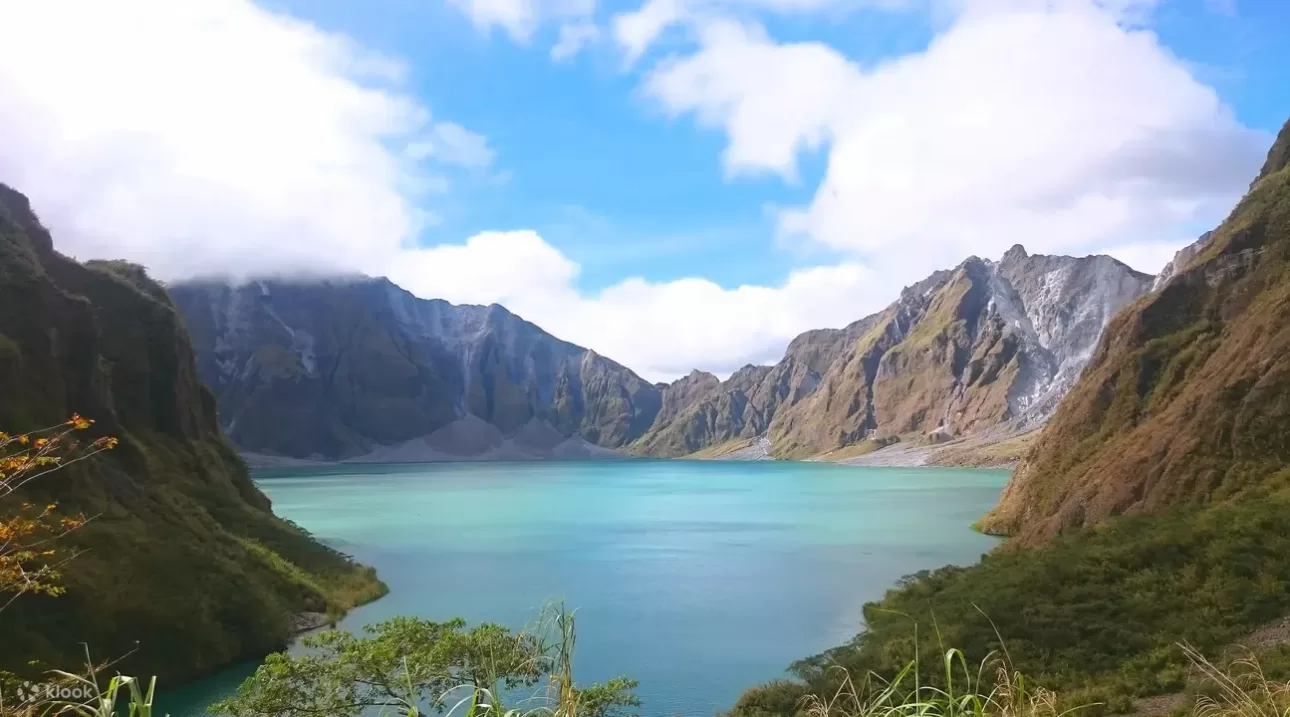
- Mount Pinatubo – This active volcano erupted in 1991, creating a stunning crater lake that attracts hikers and adventurers. The lake has a turquoise color and is surrounded by rocky cliffs and green hills. To reach the crater, visitors need to ride a 4×4 vehicle and trek for about two hours.
- Sky Ranch Pampanga – This amusement park features a giant Ferris wheel, a roller coaster, a drop tower, and other rides that will thrill kids and adults alike. Sky Ranch also has a mini zoo, a fishing village, and a garden maze.
- Dinosaurs Island – This attraction brings back the prehistoric era with life-size animatronic dinosaurs that roar and move. Dinosaurs Island also has a Jurassic Safari Ride, a Wonders of Science exhibit, and a Dino Trail where visitors can learn more about these ancient creatures.
- Museo Ning Angeles – This museum showcases the history and culture of Angeles City, the former home of the Clark Air Base. Museo Ning Angeles displays artifacts, photos, costumes, and memorabilia that tell the story of the city’s transformation from a sleepy town to a bustling metropolis.
- Zoocobia Fun Zoo – This zoo offers a fun and educational experience for animal lovers. Zoocobia features various animals such as birds, reptiles, mammals, and insects. Visitors can also enjoy activities such as feeding, petting, riding, and racing with the animals.
- Aqua Planet Water Park – This water park is one of the largest and most modern in Southeast Asia. Aqua Planet has more than 20 slides and attractions that cater to different ages and preferences. Some of the highlights include the Tornado, the Spiral Slide, the Wave Pool, and the Flow Rider.
Local Cuisine
Pampanga Cuisine: A Taste of the Philippines’ Culinary Capital
If you are looking for a gastronomic adventure in the Philippines, you should not miss Pampanga, the culinary capital of the country. Pampanga is a province in Central Luzon that boasts a rich and diverse cuisine influenced by its history, culture and environment.
Culinary History
Pampanga cuisine has been influenced by various factors throughout its history. The name Pampanga comes from the word “pampang” which means riverbank, as the province is located along the banks of the Pampanga River. The river provided abundant resources for fishing and farming, as well as trade and commerce with other regions and countries.
The most significant influence on Pampanga cuisine came from the Spanish colonial period, when Spanish friars and sailors taught Kapampangans the basics of Spanish cooking. Kapampangans learned how to use ingredients like garlic, onion, tomato, vinegar, olive oil, cheese, ham, chorizo and wine in their dishes. They also adopted cooking methods like roasting, frying, stewing and baking.
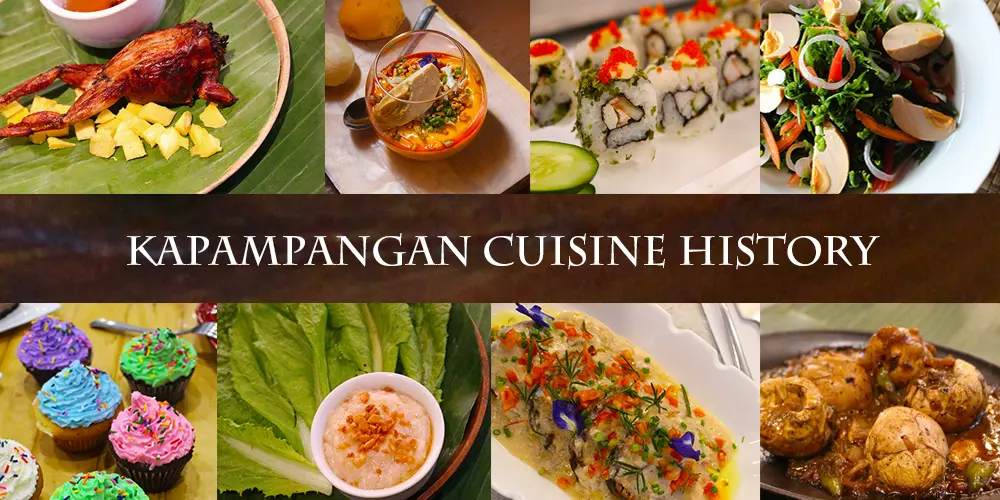
However, Kapampangans did not just copy the Spanish recipes. They also added their own twist by using local ingredients like coconut milk, turmeric, banana leaves, rice, fish sauce and calamansi. They also experimented with exotic ingredients like insects, frogs and all parts of animals. They developed a unique cooking technique called sangkutsa, which involves partially cooking ingredients like meat to be used later in other dishes. This yields bolder and fuller flavors, especially when cooking large amounts.
Kapampangans were also exposed to other cuisines through trade and migration. They incorporated elements from Malay, Chinese, Mexican and American cuisines into their dishes. They also adapted to the changing times and circumstances, such as revolts, floods, disasters and the eruption of Mt. Pinatubo in 1991, which affected their food sources and livelihoods.
Through all these influences and challenges, Kapampangans were able to preserve their culinary traditions and pass them on to the next generations. They also continued to innovate and create new dishes that reflect their identity and culture.
Pampanga cuisine is known for its bold flavors, exotic ingredients and ingenious cooking methods. Here are some of the best delicacies in Pampanga that you should definitely try.
Sisig
Sisig is one of the most famous dishes in Pampanga and the Philippines. It is a sizzling dish made of chopped pig head parts, liver, onions, chili peppers and calamansi juice. Sisig was invented by Aling Lucing, a street vendor from Angeles City, who used a hot iron plate to make the dish crispy and flavorful. Sisig is usually served as an appetizer or a beer match (pulutan) but it can also be eaten as a main course with rice.
Betute Tagak
Betute Tagak is a delicacy that may not be for the faint of heart. It is a fried frog stuffed with minced pork, garlic, onion and salt. Betute means “stuffed” and tagak means “frog” in Kapampangan. The frogs used are farm-raised and are considered a delicacy in Pampanga. Betute Tagak has a crunchy exterior and a savory filling. It is best eaten with vinegar or soy sauce dip.
Bringhe
Bringhe is a rice dish that is similar to the Spanish paella. It is made of glutinous rice cooked in coconut milk and turmeric, giving it a yellow color and a creamy texture. Bringhe is usually topped with chicken, boiled eggs, green peas, raisins and bell peppers. Bringhe is a festive dish that is often served during special occasions like weddings, birthdays and Christmas.
Bulanglang Kapampangan
Bulanglang Kapampangan is a soup dish that is different from the Bulanglang Tagalog, which is more like a vegetable stew. Bulanglang Kapampangan is made of pork, prawns or fish cooked in guava broth, giving it a sour taste. It also has vegetables like taro, okra, kangkong and green chili. Bulanglang Kapampangan is a comforting dish that is perfect for rainy days.
Kamaru
Kamaru is another exotic delicacy that you can find in Pampanga. It is made of fried rice field crickets seasoned with salt, vinegar and garlic. Kamaru are harvested during the rainy season when they are abundant in the fields. They are considered a high-protein snack that can also be eaten as a viand with rice.
Sans Rival
Sans Rival is a dessert that will make you forget about your diet. It is a cake made of layers of cashew meringue filled and coated with rich buttercream. Sans Rival means “without rival” in French and it lives up to its name as one of the most delicious cakes in Pampanga and the Philippines. Sans Rival has a crunchy and chewy texture and a sweet and buttery taste.
These are just some of the amazing delicacies that you can enjoy in Pampanga, the culinary capital of the Philippines. Pampanga cuisine is a reflection of the Kapampangan people’s passion for food, creativity and hospitality. When you visit Pampanga, you will not only satisfy your taste buds but also learn about the culture and history of this remarkable province.
Giant Lantern Festival – Christmas comes BIG here!
If you are looking for a dazzling display of lights and colors to brighten up your holiday season, you might want to visit San Fernando, Pampanga, the Christmas Capital of the Philippines. Every year, this city hosts the Giant Lantern Festival, a spectacular showcase of huge and intricate star-shaped lanterns that dance to the rhythm of music.
The Giant Lantern Festival, or Ligligan Parol in Kapampangan, is a tradition that dates back to the early 1900s, when the first lantern competition was held in honor of Aurora Aragon Quezon, the wife of then-President Manuel Quezon. The lanterns, or parols, were originally made of bamboo and Japanese paper, and lit by candles or oil lamps. They were used to decorate the streets and houses during the nine-day novena before Christmas, called lubenas.
The introduction of electricity in 1931 transformed the lanterns into more elaborate and colorful creations, with thousands of light bulbs and hundreds of meters of electrical wires. The lantern makers, or paruleros, also devised a system of rotating steel drums to control the interplay of lights and music. The lanterns grew bigger and bigger over the years, reaching up to 20 feet in diameter. Each barangay, or village, in San Fernando would compete to create the most stunning and original lantern design.
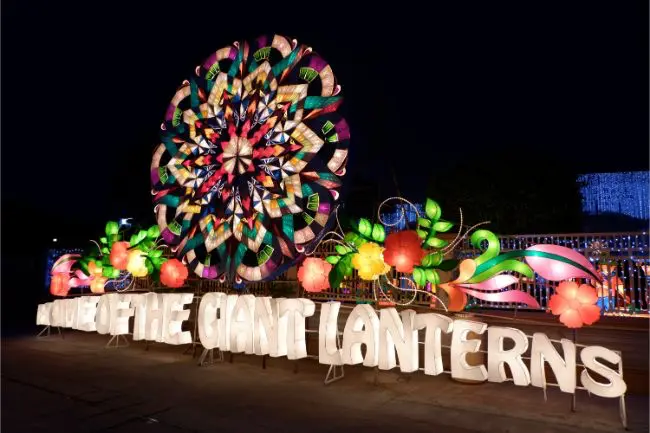
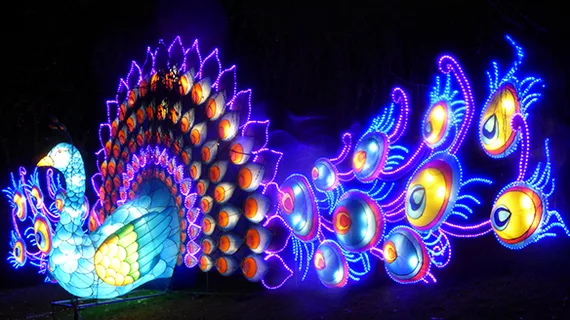
The Giant Lantern Festival is not only a display of artistic skill and craftsmanship, but also a reflection of the Kapampangan spirit of resilience, creativity, and faith. The lanterns symbolize the star of Bethlehem that guided the Magi to the birthplace of Jesus Christ. They also represent the hope and joy that light up the darkness of the world.
If you want to witness this amazing spectacle, you can join the thousands of local and foreign tourists who flock to San Fernando every December. The festival is usually held on the Saturday before Christmas Eve at the Robinsons Starmills Pampanga. You can also see the giant lanterns on display at various venues around the city until early January.
The Giant Lantern Festival is truly a unique and unforgettable experience that will make you appreciate the beauty and richness of Filipino culture. Don’t miss this chance to see the world’s biggest and brightest Christmas lanterns!
Clark Freeport Zone & New Clark City
Clark, Pampanga is a booming destination for travelers who want to experience the best of both worlds: modern amenities and natural attractions. Clark is home to some of the most luxurious and exciting hotels and casinos in the Philippines, as well as scenic landscapes, historical sites, and cultural festivals. Whether you are looking for a relaxing getaway, a thrilling adventure, or a fun-filled vacation, Clark has something for everyone.
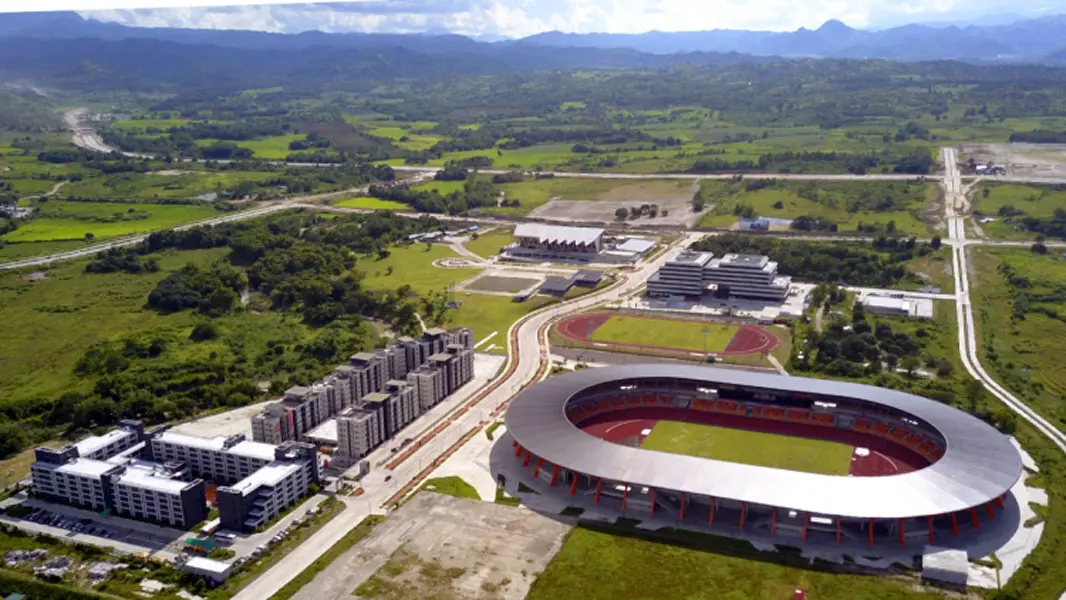
New Clark City (North of Clark Freeport & Angeles City) is a massive new development with modern sports facilities and a developing outdoor leisure scene. As a rapidly developing area it’s best to Google for the latest openings, business facilities and leisure events.
Clark International Airport
Hey, have you heard about the new airport in Clark, Pampanga? It’s pretty awesome, if you ask me. Although the airport opened in 1996, then modern, new terminal opened in May 2022, and it’s designed to handle up to eight million passengers annually. That’s a lot of people flying in and out of this region!
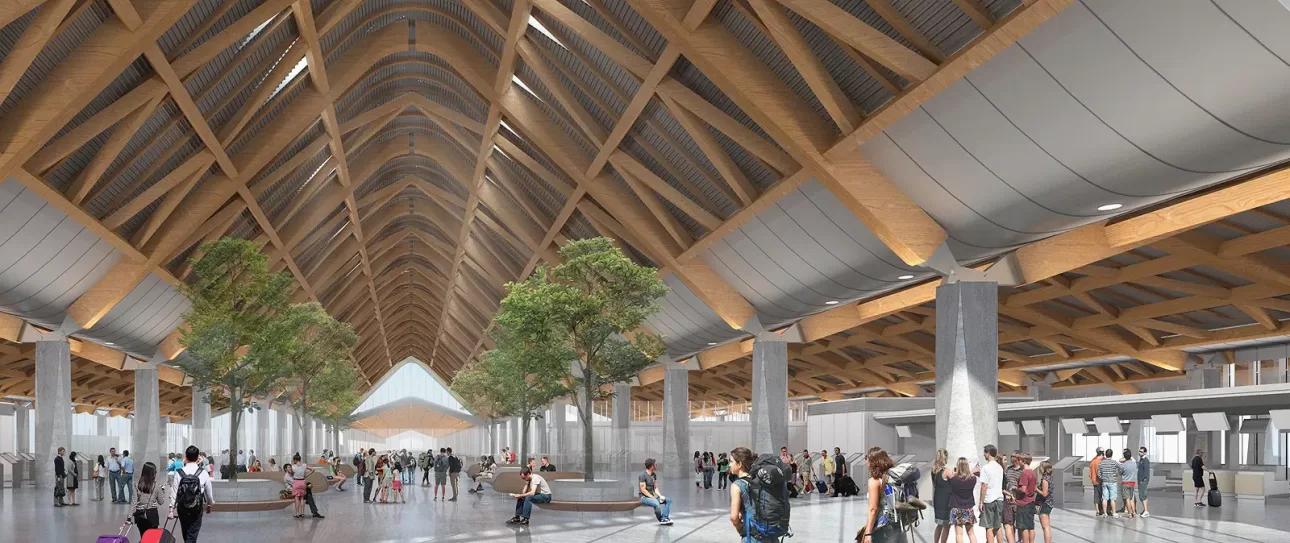
The new terminal building is huge and modern, with four floors and 18 aerobridges. It has all kinds of facilities for travelers, like self-service kiosks, bag drop systems, all-gender restrooms, nursing stations, prayer rooms, and even a lounge for OFWs. It also has contactless features to keep everyone safe.
The new airport is part of the government’s Build Build Build program, and it’s the first hybrid public-private partnership project in the country. It was built by the DOTr and the BCDA, and it’s operated by LIPAD Corporation. They say it’s going to be Asia’s next premier gateway, and I believe them. It’s definitely a game-changer for the Philippine aviation industry and I will always fly in/out of Clark rather than NAIA given the choice.

Leave a Reply